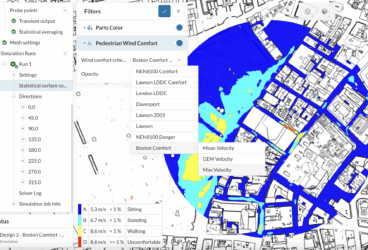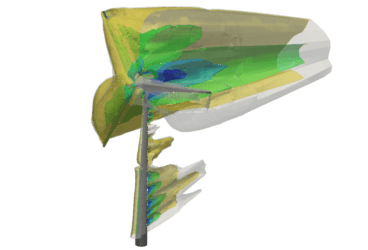Contrary to popular belief that the tallest church in Europe resides in Cologne, the Ulm Minster (Ulmer Münster in German), located in Baden-Württemberg is actually the current record holder, standing at an impressive height of 161.5 m.
Not only is it the tallest church in the European continent, but also, the world. This is, of course, only until the eventual completion of Sagrada Familia in Barcelona, Catalonia, Spain, which is planned to be finished standing 170 m off the ground. Until then, this world-record breaking structure is located in Ulm, a short 150 km and around 1.5-hour drive from our SimScale headquarters in Munich. As pedestrian wind comfort is one of our top areas of expertise, we couldn’t help but begin to think, what is the wind comfort assessment around the Ulm Minster?
Above and Around The World’s Tallest Church
This curiosity was further inspired when we found out one of our own Simployees was born and raised in Baden-Württemberg. Our Munich-based recruiter, Lisa Widmann, frequents her home in Ulm on occasion, and on a recent visit partook in a hot air balloon ride above and around the impressive church (pictured below).
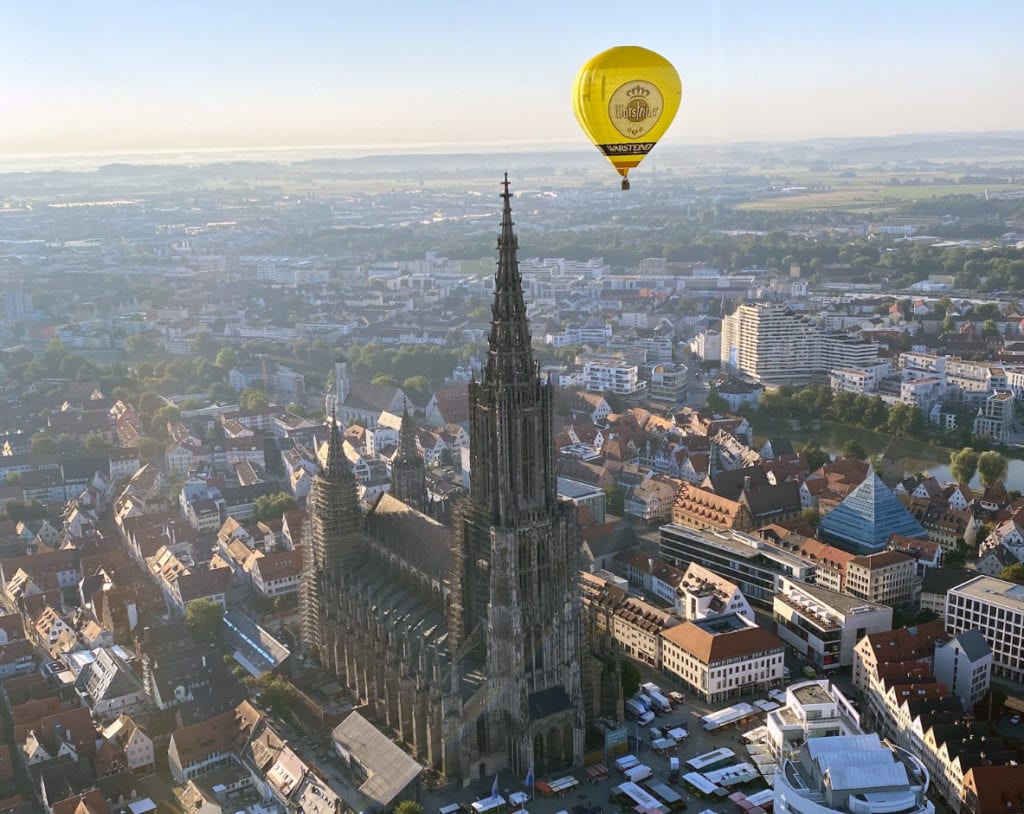
“Ulm has always been quite a unique town for me, on one hand, because it’s where I grew up, on the other hand, because the Ulmer Münster with its gothic architecture is the tallest church in the world. Driving to Ulm and walking through the city, you just can’t miss this impressive church. I have walked all the way up to the tiny tower multiple times, and am still impressed with the height every time. Even with the wind blowing around you at the very top, it still offers the most impressive view over the city. Although you always seem to have the wind following you as you are approaching the Ulmer Münster, you really can’t help but pause for a minute and enjoy the impressive height.”
Lisa Widmann
Upon learning about this, we expanded our questioning about wind comfort at pedestrian height to include higher points above the ground, namely the observation platforms. And with this, we began simulating.
Simulating the Ulm Minster (Ulmer Münster)
The idea behind this project is to get a sense of the impact this very tall church (compared to the surrounding buildings) has on the wind at high altitude, as well as what the pedestrian could experience in terms of comfort at ground-level. The type of solver for this pedestrian wind comfort project uses the lattice Boltzmann method (LBM).
Using the topography from CADMapper, a 3D model of the Ulm church was then added. Importing is simply a drag and drop operation to the browser window. The setup takes around five minutes, and consists of three simple steps:
- Step one: Define the region of interest; a circle of 200m around the church and indicate the north direction.
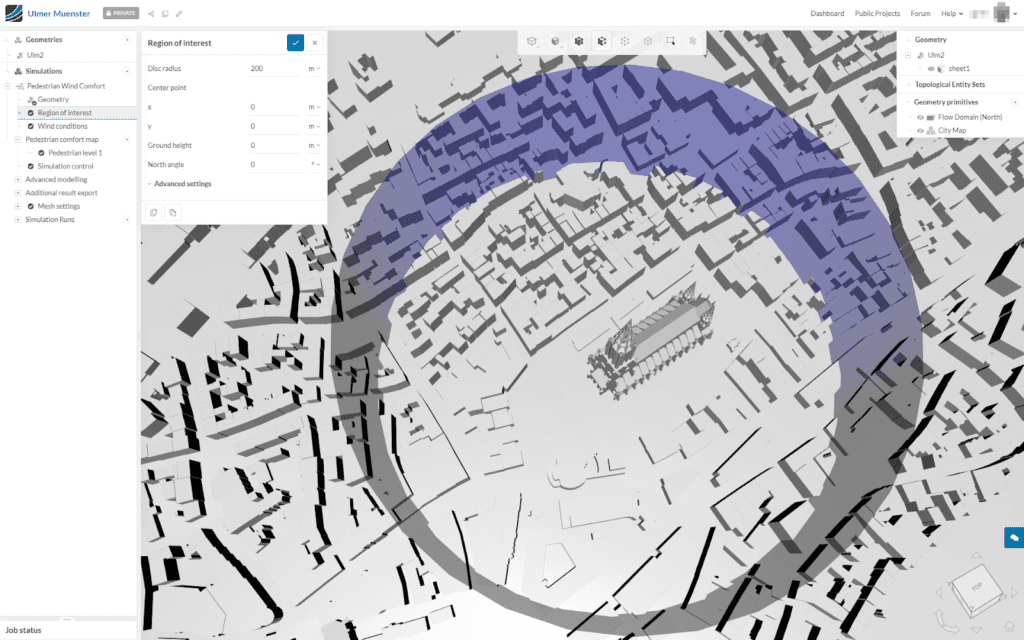
- Step two: Supply the wind condition information, including the number of wind directions to run simultaneously, as well as the magnitude and frequency at each of these directions. This can be either automatically imported wind rose form our third-party provider “meteoblue” or uploaded using a windrose “.stat” file.
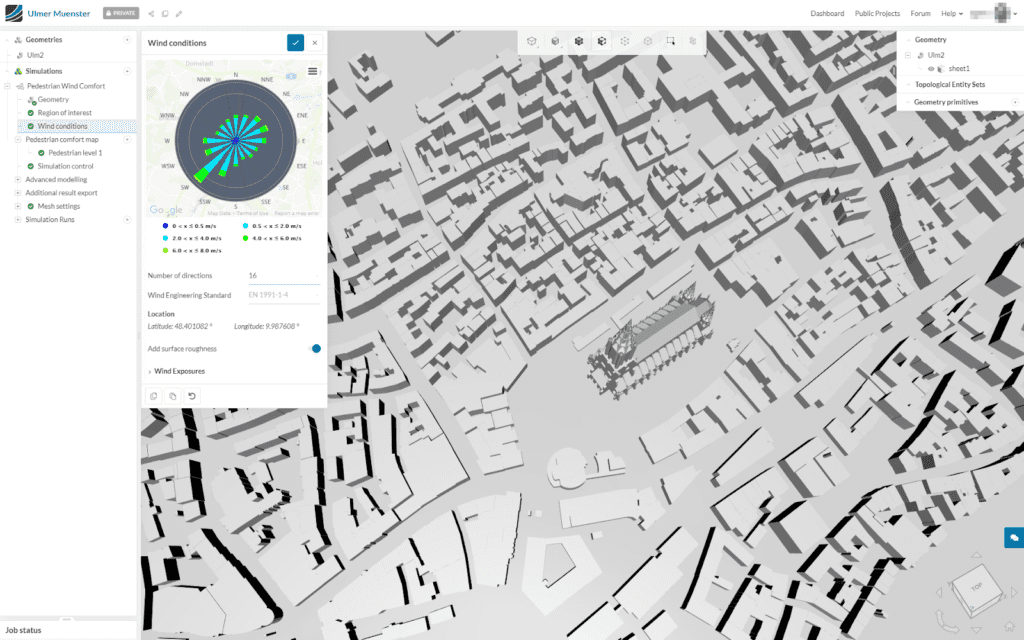
What Causes Strong Winds in Cities? Assessing Pedestrian Comfort with SimScale
- Step three: Lastly, assign the surfaces and height on which we want to evaluate the comfort of pedestrians (i.e., the ground surface and the different platforms of the towers). Optionally, you can define the resolution of the grid of the computational domain for better accuracy of the results.

After running our first simulation, it was found that the wind comfort is worse on the observation platform, and particularly the one at the tip of the belfry (known as the third Gallery, as it is a tall, spiraling staircase that has barely enough room for one person). Upon entering the winding staircase to the viewing platform situated 143 m (469 ft) above ground-level, the visitors are exposed to the strong higher altitude wind, coming directly on the façade of the structure. Such higher wind speeds are responsible for such low wind comfort. Hold onto your hats folks, it’s pretty windy up there!
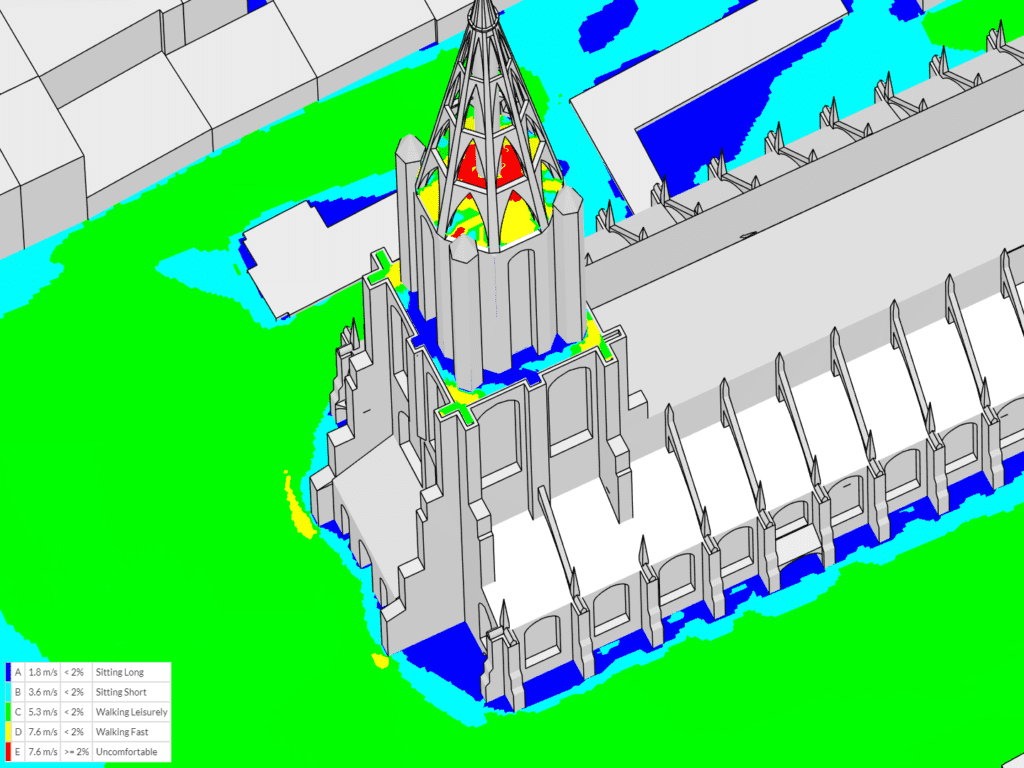
The wind comfort around the immediate vicinity of the church is visibly less than on the side streets. To understand why this is happening, it is necessary to take into consideration the difference when compared to some altitude(s), and have a look at what is going on at the wind that comes against the building façade. The animation below shows a situation where the wind comes from the west and hits the main façade of the church perpendicularly. The streamlines represent the trajectory of the airflow. As the airflow reaches the wall, it is redirected to downward and picks up speed along the ground. This wind effect is known as the downdraft effect. On top of that, we can also observe that the flow accelerates as it reaches the corner of the building. This is the cornering effect, and it is also responsible for worsening wind comfort for the passersby.
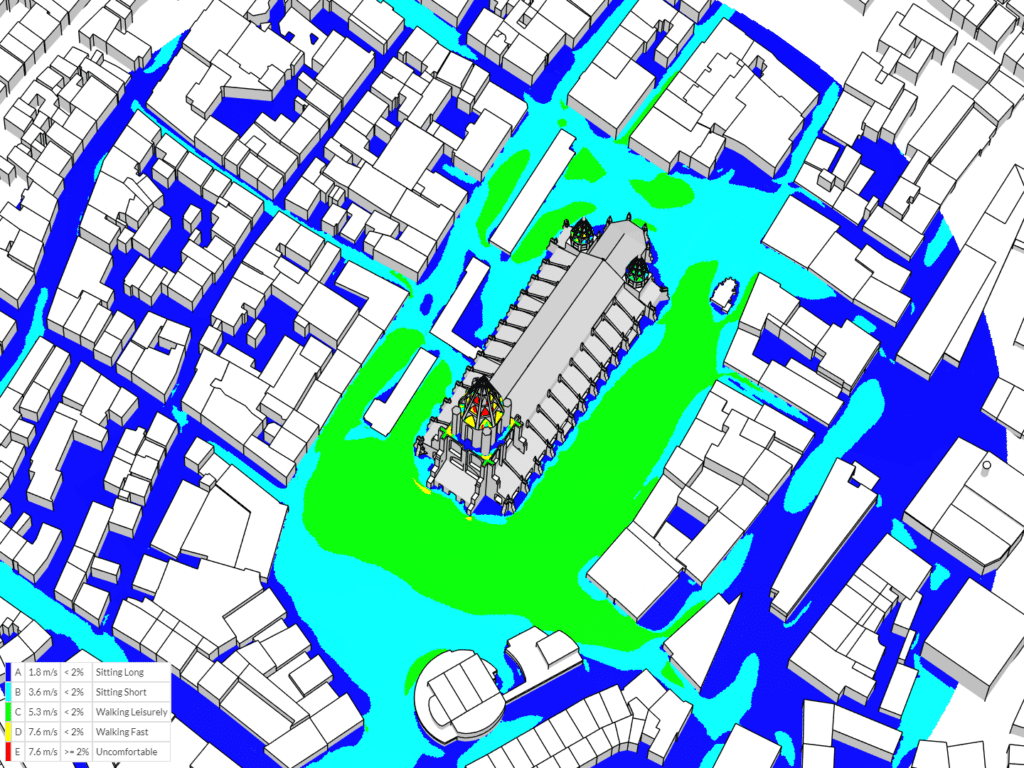
The LBM solver used for this analysis computes the airflow velocity, pressure, and turbulence values in a transient way, and this enables the visualization of time-fluctuating results. The airflow distribution can be plotted over time, as shown in the animation below. With this kind of result, one can identify time-dependent phenomena such as local gusting, as well as vortex formations. The transient velocity contour shows once again the downdraft effect in front of the lower part of the façade. One can observe highly turbulent flow in the wake region of the building, with air accelerating periodically as it passes between the two secondary towers at the rear of the building.
Conclusion
In this small project, we could identify that the wind comfort around the church is adversely affected by a downdraft effect generated by the tall façade of the structure. The results show, for one instance, that with a wind coming from the west against the main façade, causes the airflow to be redirected downward, gaining speed as it reaches the ground and the corner of the structure. This causes accelerated wind speeds that will be felt by pedestrians and passersby.
On top of that, we have seen that other surfaces and areas frequented by tourists, such as the observation platform on the tower can also be analyzed for wind comfort, and some overexposed areas that could potentially jeopardize the safety of the visitors highlighted.
With many visitors per year flocking to Ulm to see the mighty church tower, it’s safe to say pedestrian wind comfort may not always be optimal due to the urban environment’s effect on wind passing through the city, but it doesn’t seem to be a problem for Ulm’s tourism.
Want to learn more about pedestrian wind comfort assessment with SimScale? Check out these PWC resources:
- Boston Waterfront Weather & Pedestrian Wind Comfort
- How to Analyze Pedestrian Wind Comfort with SimScale
- Wind Comfort Criteria: Lawson, Davenport, and NEN 8100
- Lawson Wind Comfort Criteria: A Closer Look
- Pedestrian Wind Comfort Analysis Type
Interested in seeing how PWC is done? Watch these videos from our SimScale YouTube channel:
- Flatiron Building Simulation | Pedestrian Wind Comfort
- Pressure Coefficients on Building Facades for Building Simulation
- How to Model Trees with Porous Media — Pedestrian Wind Comfort with SimScale
- SimScale Feature: Multi-Direction Pedestrian Wind Comfort Analysis

